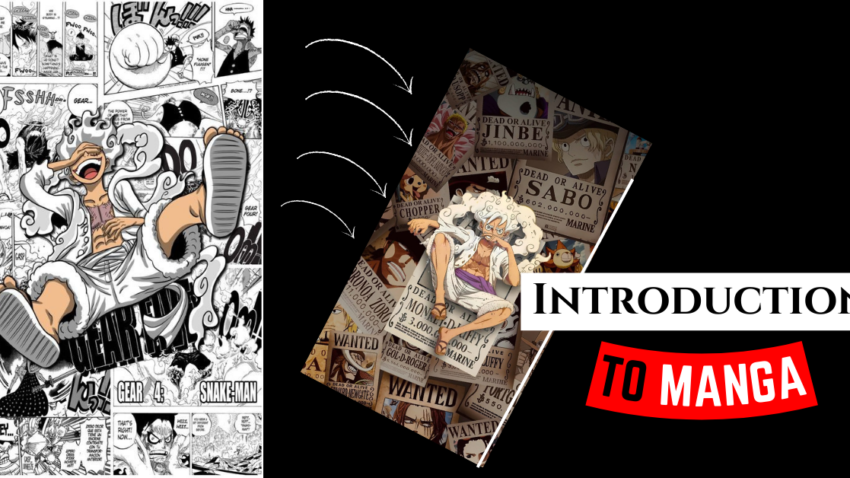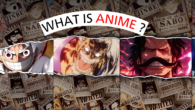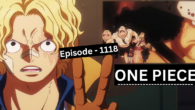
What is Manga ?
Manga: An Introduction to the Art and Culture of Japanese Comics
Manga refers to a style of comic books or graphic novels that originated in Japan and has gained massive popularity worldwide. It is not merely a form of entertainment, but an integral part of Japanese culture, encompassing a wide variety of genres and art styles. Manga has evolved into an international phenomenon, influencing artists, writers, and readers alike.
What is Manga?
Manga is a Japanese term that refers to comic books or graphic novels, typically serialized in magazines or published as standalone volumes. Unlike Western comics, which are often associated with superhero stories, It covers an extensive range of genres, including fantasy, romance, horror, science fiction, and slice-of-life stories. It is known for its diverse art styles and ability to appeal to people of all ages, from children to adults.
In Japan, this art is a common part of everyday life, and it is consumed by millions of readers. It plays an essential role in entertainment, education, and even advertising.
The Origins and Evolution of Manga
Early Beginnings
It has a long history that traces back to ancient Japan. The earliest examples of manga-like artwork can be found in ukiyo-e woodblock prints and illustrated books from the Edo period (1603-1868). However, modern art as we know it began to take shape in the late 19th and early 20th centuries.
In the 1920s and 1930s, Japan saw the rise of the first manga magazines, which featured cartoons and short stories aimed at children. It wasn’t until the post-World War II period, when Japan’s economy was recovering and becoming more modern, that this truly exploded in popularity.
Post-War Growth
The 1950s and 1960s marked a crucial turning point for manga. Pioneers like Osamu Tezuka, often called the “God of Manga,” revolutionized the industry with his groundbreaking work Astro Boy (also known as Tetsuwan Atom). Tezuka’s storytelling techniques, character designs, and cinematic approach to pacing helped establish the blueprint for modern art. His success inspired numerous other art and artists to follow suit, and the industry began to diversify, with this art for different age groups and genres emerging.
Types of Manga and Their Audience
This can be categorized based on its target audience and genre. Below are the major types of this art.
1. Shonen Manga (For Boys)
Shonen manga is aimed primarily at young boys, usually between the ages of 8 and 18. These stories often focus on action, adventure, friendship, and growth. The protagonists of shonen art are typically young boys who strive to overcome challenges, grow stronger, and pursue their dreams.
Popular examples of shonen manga include Naruto, Dragon Ball, and One Piece. These series often feature epic battles, powerful villains, and themes of loyalty and perseverance.
2. Shojo Manga (For Girls)
Shojo manga is intended for young girls, typically aged between 8 and 18. Shojo stories often revolve around romance, relationships, and personal growth. The art style of shojo art is generally more delicate and features large, expressive eyes for the characters.
Famous shojo manga include Sailor Moon, Fruits Basket, and Ouran High School Host Club. These stories usually emphasize emotional depth and the development of relationships, often focusing on the protagonist’s journey to self-discovery.
3. Seinen Manga (For Adult Men)
Seinen manga is targeted at adult men, typically aged 18 and older. These manga tend to have more complex and mature themes, including psychological, political, and philosophical topics. The art style may be more realistic, and the stories are often darker, with deeper character development.
Notable examples of seinen manga include Berserk, Ghost in the Shell, and Tokyo Ghoul. These works are known for exploring complex themes like morality, existentialism, and dystopian societies.
4. Josei Manga (For Adult Women)
Josei manga is aimed at adult women, typically aged 18 and older. These stories often feature mature, realistic depictions of relationships, with an emphasis on love, work-life balance, and personal struggles. Josei manga often portrays more grounded, adult perspectives compared to shojo.
Popular examples include Nana, Paradise Kiss, and Honey and Clover. These stories are often more realistic and relatable, exploring the complexities of adult relationships and personal development.
The Art of Manga
Manga’s distinctive art style is one of the key features that sets it apart from other forms of comic art. The drawings are typically black-and-white, with careful attention to detail, particularly in the depiction of characters’ facial expressions. In contrast to Western comics, which often feature exaggerated musculature and action, manga characters tend to have more varied proportions and subtle features.
Panel Layout and Composition
In manga, the panel layout plays an important role in pacing and storytelling. Manga artists use a wide range of techniques to convey movement and emotion. For example, diagonal lines and speed lines are often used to indicate action or intensity, while silence can be shown with sparse paneling or long pauses in the narrative.
The flow of a japaneas art page is usually from right to left, following the traditional Japanese reading pattern. This is different from Western comics, which are read from left to right. Readers of translated this art will often see the panels flipped to accommodate Western reading habits.
Expression and Symbolism
One of the most distinctive features of manga art is the use of exaggerated facial expressions and symbolism. Characters’ emotions are often depicted through large, expressive eyes, dramatic facial contortions, and visual symbols like sweat drops, nosebleeds, or hearts. These symbols help convey the characters’ internal states and add humor, drama, or tension to the scene.
The Global Impact of Manga
Manga in Japan
In Japan, This art is a ubiquitous part of daily life. It is consumed by people of all ages, from children to adults. This art is not just confined to bookstores; it can be found in convenience stores, cafes, and even in waiting rooms. Some manga series are so popular that they are adapted into anime (animated TV shows or films), merchandise, video games, and even theme park attractions.
Manga Worldwide
Outside of Japan, this art has experienced a rapid rise in popularity. Translated japanese art is now widely available in bookstores and online retailers across the world. Major publishers such as VIZ Media, Kodansha, and Dark Horse Comics have played a significant role in bringing Japanese art to international audiences.
2D Animation Anime adaptations of popular manga series have also contributed to the global spread of this art culture. Fans around the world now have easy access to both the original art and its anime adaptations, which have led to a growing interest in Japanese pop culture.
Conclusion
Manga is more than just a form of entertainment; it is a reflection of Japanese culture and a dynamic art form that continues to evolve. Whether it’s a lighthearted shonen adventure or a profound psychological exploration in seinen, art has something for everyone. Its global reach has introduced millions to the beauty of Japanese storytelling and art, while its influence can be seen in various other creative mediums worldwide.
This art is here to stay, and its diverse genres, vibrant art styles, and cultural significance make it a unique and captivating part of global pop culture. Whether you are a long-time fan or a newcomer, exploring the world of morden art offers a window into a fascinating and ever-expanding universe.













Leave a Reply